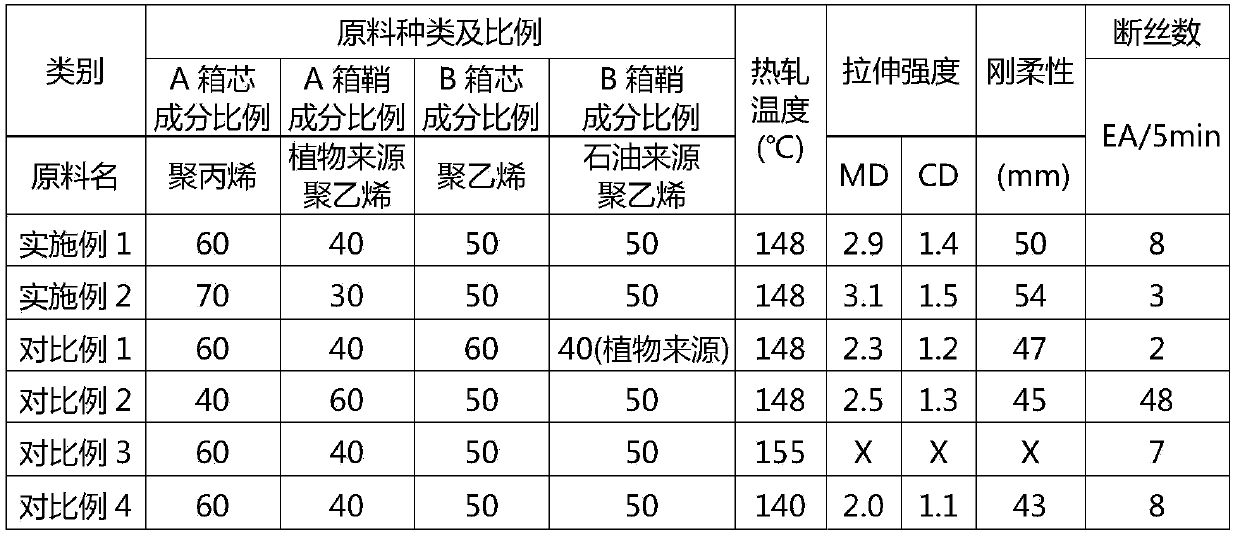Environmental-friendly composite long-fiber nonwoven fabric containing composition derived from plant and manufacturing method thereof
A long-fiber non-woven, plant-derived technology, applied in the direction of conjugated synthetic polymer rayon, fiber processing, textiles and papermaking, etc. It can improve process stability, improve tensile strength, rigidity and flexibility, and improve productivity.
- Summary
- Abstract
- Description
- Claims
- Application Information
AI Technical Summary
Problems solved by technology
Method used
Image
Examples
Embodiment 1
[0037] In one spinning box (Spinning Box A), polypropylene with a melting point of 165°C and a melt index (MI) of 35 was used as the core component, and polyethylene of vegetable origin with a melting point of 125°C and a MI of 20 was used as the core component. The temperature of the extruder for the sheath component and the core component is 230°C, and the extruder for the sheath component is 250°C. In this state, the raw materials are melted. In another spinning box (B spinning box), the melting point is set to Polypropylene with 165°C and MI of 35 is used as the core component, and petroleum-derived polyethylene with a melting point of 125°C and MI of 32 is used as the sheath component. The extruder temperature for the core component is 230°C, and the extruder for the sheath component The temperature is 230°C, and the raw material is melted in this state. The molten polymer moves through an independent flow path with the help of the distribution plate in the composite spin...
Embodiment 2
[0039] A nonwoven fabric was produced in the same manner as in Example 1, except that the ratio of the core component and the sheath component of the spinning beam A was configured at 70:30.
PUM
| Property | Measurement | Unit |
|---|---|---|
| Basis weight | aaaaa | aaaaa |
| melting point | aaaaa | aaaaa |
Abstract
Description
Claims
Application Information
 Login to View More
Login to View More - R&D Engineer
- R&D Manager
- IP Professional
- Industry Leading Data Capabilities
- Powerful AI technology
- Patent DNA Extraction
Browse by: Latest US Patents, China's latest patents, Technical Efficacy Thesaurus, Application Domain, Technology Topic, Popular Technical Reports.
© 2024 PatSnap. All rights reserved.Legal|Privacy policy|Modern Slavery Act Transparency Statement|Sitemap|About US| Contact US: help@patsnap.com








